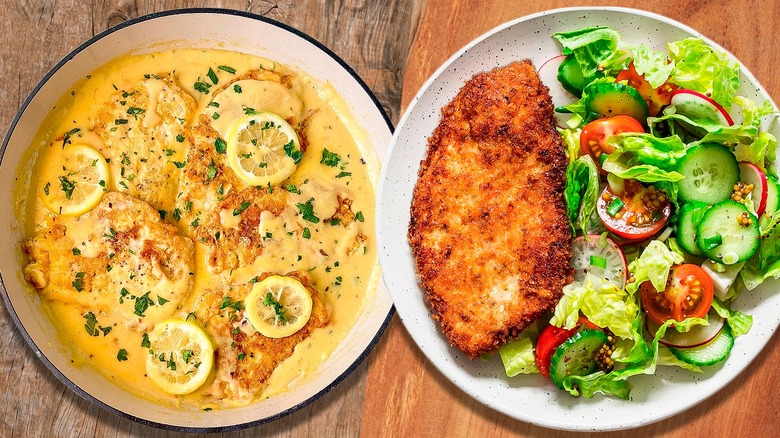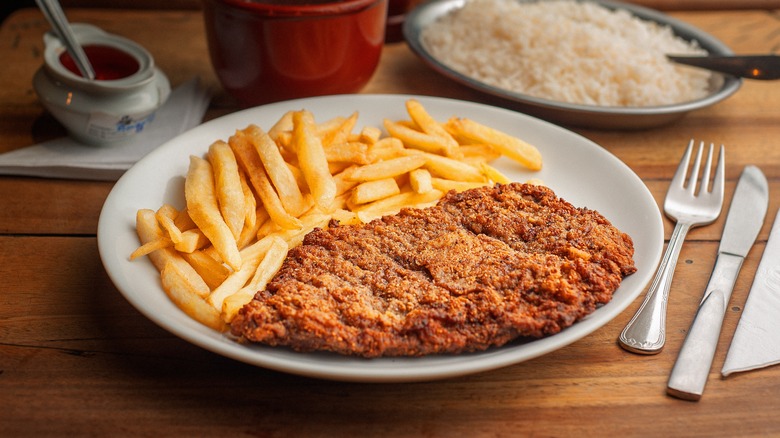The Difference Between Chicken Francese And Milanese
Chicken Francese and chicken Milanese are two iconic Italian dishes beloved around the globe. Despite sharing the spotlight in the realm of poultry-based gastronomy, they differ in their preparation methods and flavors. The standard recipe for chicken Milanese — which, as its name suggests, originated in Milan — features thinly-pounded chicken breasts dredged in flour, eggs, and breadcrumbs before being fried to golden perfection. This triple-layered crust not only ensures a crispy exterior but also locks in moisture, resulting in tender and succulent chicken. The flour provides a base for the egg wash to adhere to, while the breadcrumbs yield a satisfying crunch. Additionally, the use of breadcrumbs infuses the meat with a subtle nuttiness.
On the other hand, chicken Francese — which, despite its name, is Italian, not French — boasts a simpler yet equally-delectable technique. Hailing from Italian-American tradition and being particularly popular in New York, a classic chicken Francese recipe calls for thinly-sliced chicken breasts dipped in a mixture of flour and eggs before being pan-fried. The absence of breadcrumbs ultimately results in a lighter coating than its counterpart. The straightforward embellishment allows the tangy lemon sauce, a hallmark of chicken Francese, to shine through.
Breadcrumbs vs no breadcrumbs
The differing dredge compositions of the two dishes contribute significantly to their overall character. While chicken Milanese is a bit more invigorating, thanks to a varnish of breadcrumbs, chicken Francese presents a refined texture with a subtle eggy richness. Moreover, the choice of dredging ingredients influences how each fare interacts with accompanying sauces or garnishes.
Chicken Milanese pairs wonderfully with mashed potatoes or buttery pasta. Tomato-centric salads like Caprese with a drizzle of balsamic vinaigrette can accentuate the savory undertones of chicken Milanese, too. On the contrary, chicken Francese's delicate coating harmonizes beautifully with a velvety sauce made with chicken broth, minced garlic, lemon juice or zest, flour, butter, and white wine. As far as which type of white wine to use, we recommend pinot grigio or sauvignon blanc.
Indeed, chicken Milanese and chicken Francese have earned their places in culinary history and continue to captivate diners worldwide. While both offer delightful variations on the theme of breaded chicken, their distinct dredge mixtures give rise to unique profiles. Whether you're craving the snappy bite of chicken Milanese or the elegance of chicken Francese, both promise a memorable experience that celebrates the timeless appeal of Italian-inspired cuisine.

